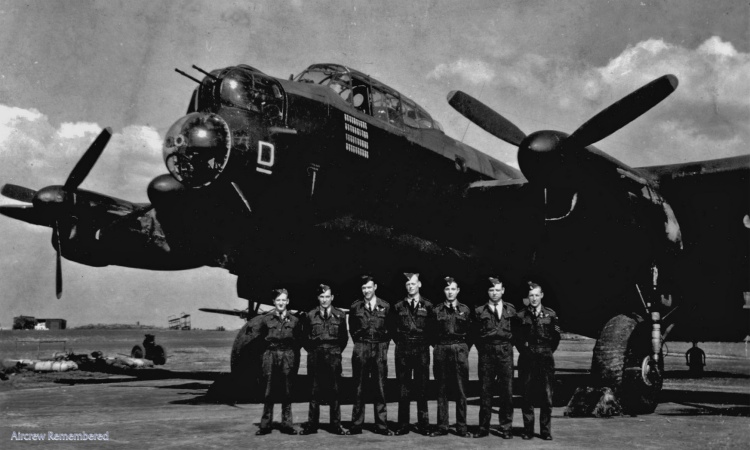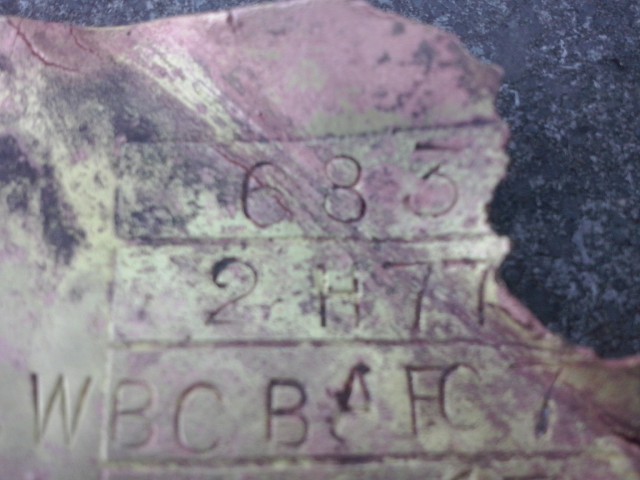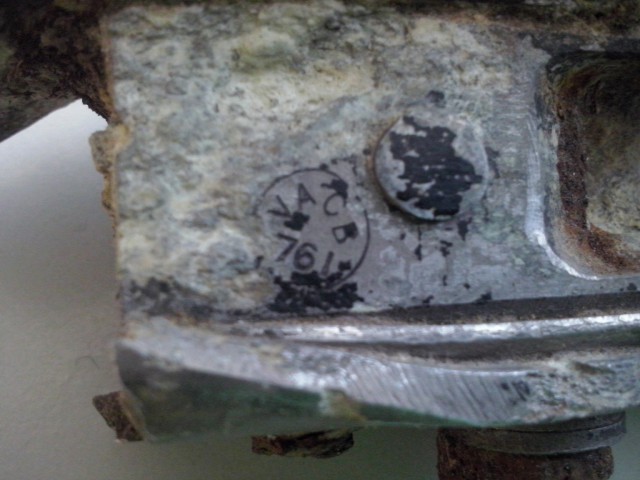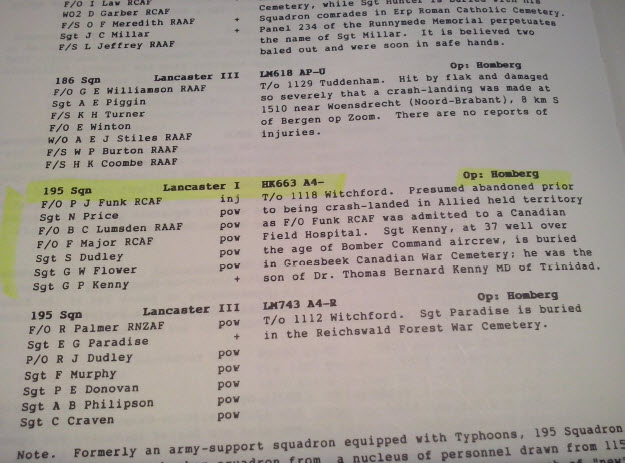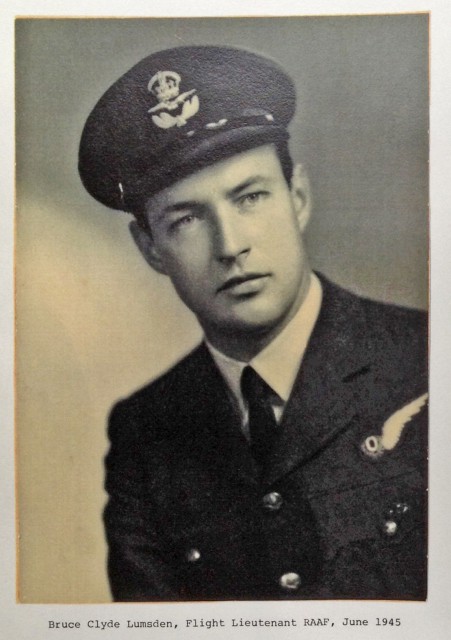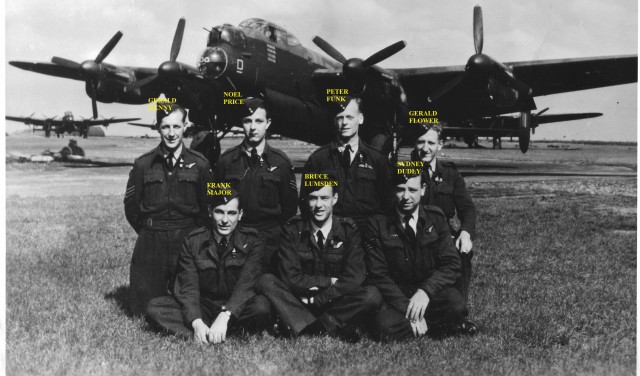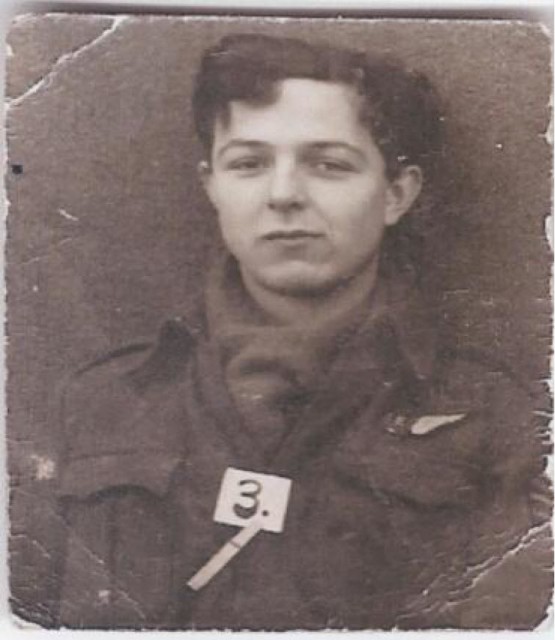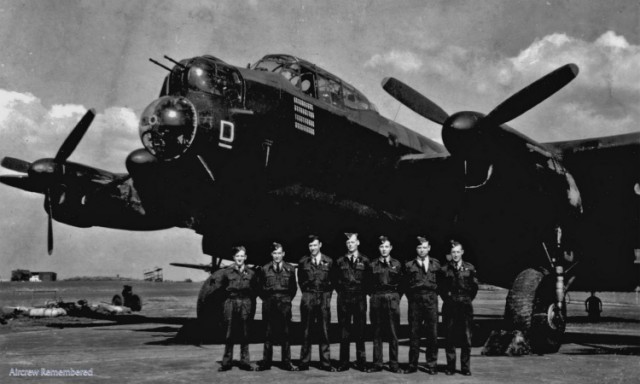
Until may 2014 the crash location of Lancaster HK 663 from 195 Sqn was not known, but in most literature “Holland” was mentioned as crash location.
Aircraft history:
Serial Range HK553 – HK806 This aircraft was one of 200 Lancaster’s ordered from Vickers Armstrong (Castle Bromwich) as Mk.11 Sep41 and changed to Mk.111 Feb43, but built as Mk.1s from Oct43 to Feb45. Up to HK773 had Merlin 22 engines initially installed, and all subsequent models had Merlin 24 engines. HK663 was delivered to No.195 Sqn 16Oct 44 When lost this aircraft had a total of 18 recorded hours HK663 was one of two No.195 Sqn Lancaster’s lost on this operation.
Crew information:
F/O P.J.Funk RCAF Inj
F/O B.C.Lumsden RAAF PoW in Camp L3, PoW No.8709
F/O F.Major RCAF PoW No.8719
Sgt G.W.Flower PoW No.1139
Sgt G.P.Kenny KIA
Sgt S.Dudley was interned in Camp L7, PoW No.1135,
Sgt N.Price, PoW No.1162.
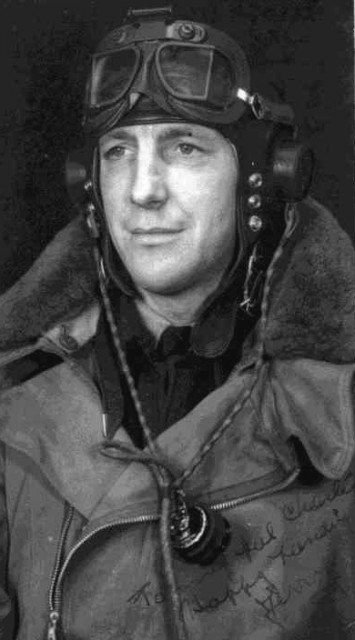
The raid:
On 2-11-1944 about 184 Lancaster’s from no.3 group were tasked against the oil plant at Homberg Germany. It was a daylight precision bombing mission, 195 Sqn. was involved in the raid and they took off from Whitchford at 11.18 AM. They successfully attacked the oil plant, in the graph below the result of the attack that day 2-11-1944. 5 Aircraft were lost that day.
Date of 1944 Attacks:
2 Nov.
HE Bombs Dropped Tons:
938
Average Weight of HE Bombs Dropped, Pounds:
1.160
Bombs Exploded in Target Area, Tons:
20.3
Average Daily Production for 3 Days before Attack, Metric Tons:
48
2nd Day:
0
7th Day:
0
Cause of Production Loss and Other Major Damage:
Heavy damage to water-gas generators, hydrogen sulfide removal plant, benzine distillation unit, to tanks and pipelines
Recuperability as Estimated by Plant, percent of Capacity:
No estimate reconstruction continues
Estimated Damage, Reichmarks:
1,500,000
On the way back to England the aircraft crashed landed, the only information on internet is the following 2 sentences:
Presumed abandoned prior to being crash-landed in Allied held territory as F/O Funk was admitted to a Canadian Field Hospital.
Sgt Kenny, at 37 well over the average age of air-crew, is buried in Groesbeek Canadian Cemetery; he was the son of Dr.Thomas Bernard Kenny MD of Trinidad.
Discovery of the crash location:
The City of Venray and surrounding little towns that now belong to Venray will mark there 70th anniversary of their liberation in September 2014. The idea was brought up by Mr. Bernard Ploegmakers to form a committee that would research what aircraft came down during WW2 in Venray. The crash information will then be displayed on 4 different locations in the towns.
The committee existed of about 7 people that all were involved with the history of WW2 in one or another way. There was a list of 53 possible crashes that came from two local researchers. On one of these crashes the information we had was: a Halifax bomber from 78 Sqn that crashed on 4-11-1944 just behind the nowadays German military cemetery. Within the committee Mr. Toon v/d Wetering from Volkel airbase doubt that it was a Halifax in reference to information he had about that particular Halifax.
So I went out with my metal detector and found evidence from a crashed WW2 aircraft located just outside the fence of the German military cemetery. The small pieces I found were for sure from a WW2 aircraft, but no proof of the aircraft type.
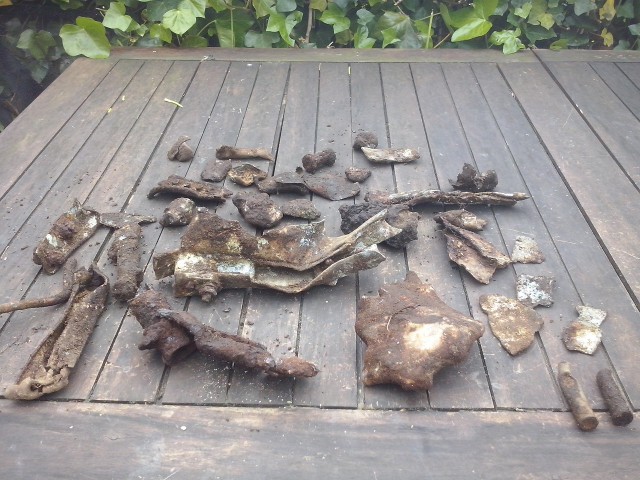
Mr. Lei Potten who serves at the committee as well arranged permission to search on the war cemetery. There is about 40 yards of wooden area right at the fence on the inside. We found quite some small pieces of metal and when cleaning it 2 of these were quite interesting.
That was a part bearing the letters VACB 761 which means the aircraft was build at Vickers Armstrong in the Castle Bromwich factory. And second a type plate that reveals the number 683 which stands for the aircraft type, a Lancaster!! Yes we new for sure the aircraft type now.
In the meantime Mr. Jan Strijbos copied all sorts of old documents from the city’s archives and found a letter describing that the crashed airplane could be a Lancaster or a Halifax.
Myself went through the missing aircrafts from the RAF in W.R.Chorley’s list around the datum of 4-11-1944 and found out that on 2-11-1944 a Lancaster crashed in Holland but the location was not known. The aircraft mentioned the HK633 was build at Castle Bromwich and was on a mission to Homberg Germany which would have brought it close to the Ysselsteyn area.
I had a good feeling this was the aircraft we were looking for, furthermore 2 other Lancaster’s on the sane raid crash in the neighbourhood that day on 2-11-1944 and were identified. But we did not have the final proof but that came a few days later when Mr. Lei Potten found out that Sgt G.B. Kenny the tail gunner was brought in at the British field hospital located at the local school wounded and died that same day. Also his name is on a memorial stone located in Ysselsteyn.
There are 2 mistakes made though, the first one is that the date on the memorial stone is 2-10-1944 instead of 2-11-1944 and secondly he is registered as a Canadian, but he has the nationality of Great Brittan (Trinidad is from the U.K.) according files found on the internet.
1835809 Sgt Gerald Patrick, KENNY
Service No: 1835809 Service: RAFVR
Trade/Branch: Air Gnr DOB:
Squadron(s): 195
Station/Unit/Ship: Witchford
Group: Command: Bomber
Nationality: Trinidad Enlisted : Jan/Feb 1943
Disposal: KIA Age 37 yrs Date Died: 2 Nov 1944
Aircraft : Lancaster I HK663
Aftermath:
The information will be shared with the community by informing all kinds of interested parties that have to do with WW2 crashes in Europe.
After searching for family members ( thanks to peter Gulliver and Neil) 2 survivors were found in the spring of 2014 being Gerald Flower (89) living in Vancouver area Canada and Sydney Dudley (93) living in England. Gerald was in the Netherlands in 2011 and visited the war cemetery in Groesbeek but did not know the tailgunner Kenny was buried over there untill he read this report.
From the other crewmembers daughters, sons or nephews were found and contacted. The son of the Pilot, David Funk lived even in the Netherlands.
From these contact most information came from “James” (Australia) the husband of Alister Bradbeer a daughter from Bruce Lumsden the navigator. Bruce had written down al his experiences from the last flight up to imprisonment as POW and the liberation from the camp. He shared this with James over the years in lots of letters and this was done on a unbelievable detailed level.
Following is his description of the fatal last flight and some pictures gathered from the various
family members.
On that Autumn day in 1944, our crew had already notched up 20 operations over Europe, most of them at night, but a number during daylight. We were therefore an experienced crew; there were probably only two or three crews on the squadron who had completed a greater number of “ops”. It is understandable that if you have avoided “getting the chop” for so long you have built up considerable confidence, both in the capacity of the crew and in the aircraft, without consciously lessening your awareness of the perils, particularly in those seven or eight minutes over the target area. What you have failed to calculate is that after 20 ops, your time, statistically calculated has run out. Having managed to survive 20 ops, you consider your chances of completing another 10 and so finishing a tour are increasing all the time; instead the chances, statistically reckoned, are now lowered.
We were called at 6.30 that morning and ordered to report to the mess at 7.15 for the pre-op meal. That would indicate a take-off time of 9.30 or 10 o’clock. But after entering the briefing room at 8 o’clock, we were told that there had been a delay because of weather conditions over the target.
Later there was a further postponement of take-off, I seem to remember. Eventually we took off about 12 noon.
At first the briefing seemed to take the normal course. The target, we were told was a synthetic oil refinery at the town of Homberg, on the Rhine opposite the city of Duisberg. (A few days before, we had bombed Duisberg with a maximum force (up to 1000 bombers) twice in ten hours; the first raid at about 9 p.m. and the second at 7 a.m. the next morning. (It must have been a terrible pounding.) All the usual information was given about the route to the target, the times of take-off, setting course, over target, etc., the weather forecast, the enemy defences and all the rest. Then came the completely surprising announcement that aircraft were to fly in formation. We had never flown in formation before. The R.A.F. never flew in formation. The Americans always flew in huge formations and were experts in such flying, but our pilots had never practised formation flying. It was a lunatic idea and where it emanated from, and why, we were not told. But I don’t remember that anyone was very upset by the order or seriously questioned it. That was the order; we simply had to carry it out.
After take-off, our squadron of three flights (six aircraft in each flight) was to rendezvous with another squadron over Reading. Each aircraft was given its position in the formation. Ours was No 2 in the first flight at the head of our formation. Unlike the tactics of the Americans, however, who used a Master Navigator in the lead aircraft, the rest simply following in formation, our orders were that each navigator was to keep his own navigation plot. I suppose this was a precaution against the failure of the attempt to fly in formation. Furthermore, each aircraft was to make its own bombing run and each bomb-aimer bomb separately. The Americans always had a Master Bombardier.
After take-off we climbed to 8,000 feet, heading for the rendezvous point. Here we met our first problem. There was no sign of the other squadron. We hung around for 3 or 4 minutes, but then at 12.40 p.m., unable to wait longer, we set course. I remember being slightly disgusted that the others were not able to carry out such a simple manoeuvre as a rendezvous at an appointed time. I think also that we were all probably a bit disconcerted that there had been a major failure of plans so early in the operation. It did not encourage confidence in this extraordinary new tactic that had been so suddenly ordered.
But from then on, things got only worse. Now setting course four minutes late, a quite serious departure from orders, I expected that the leading aircraft would increase speed in order to try to make up time. With a full bomb load, there was not much reserve power, but we could have managed another 5 or, perhaps, even 10 knots. But instead our cruising speed actually decreased. I was very fussed by this, but we were under strict radio silence – to break radio silence was almost a court-martial offence – so there was no communication between the aircraft in the formation. We cruised on, losing time steadily and I noticed that when we crossed the enemy coast, we were eight minutes behind time.
I remember now that the squadron commander had decided to fly on this “op”. Squadron commanders seldom flew but some of them liked to go on an occasional “op”. They would go with an inexperienced crew; and that meant, as in this case, with an inexperienced navigator. Normally that would not be the concern of other crews, but on this day everyone was in the hands of a navigator who was making only his first or second flight, because, of course, the squadron commander considered that he should lead the formation. The rest of us would have reasoned differently.
Almost as soon as we had crossed the enemy coast, more trouble appeared. The squadron commander “feathered” his port outer engine. We couldn’t ask, “What’s the matter?” but presumably the engine had been overheating and he had been nursing it along at less than the prescribed cruising speed. Then a green Aldus lamp commenced flashing at us from a turret. Syd Dudley our radio operator, read the morse: “Take lead”. So we moved into the No.1 position in the formation.
By this time we were perhaps only thirty minutes from the target and Peter Funk our pilot spoke to me on the intercom. “What do you want us to do, Bruce? Do you think we should try to make up time or just keep going as we are?”
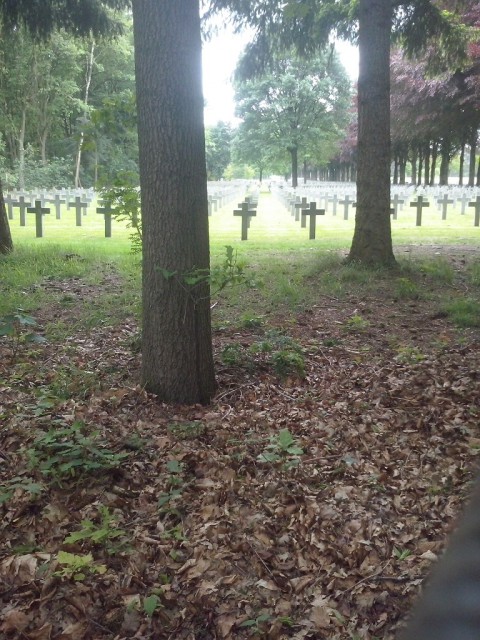
It was not really my decision to make but the pilot’s. I was of a higher rank but he was captain of the aircraft. However, with my ingrained respect for both punctuality and compliance with orders, I replied at once, “I think we should try to make up time.” It was probably not a wise decision, but the error of it was considerably multiplied when the pilot edged the four throttles forward to gain another few knots of airspeed. Instead of the other aircraft in the formation following suit and coming with us, we were astounded to see a gap opening up between us and them as, for some reason, they all remained with
the crippled aircraft.
We could see, some distance ahead of us, another wave of bombers steadily approaching the target, and I think Peter thought we might just catch them up before reaching the target, but there was not enough time.
So in another ten or fifteen minutes, we turned on to our last short leg, the run into the target. Having left behind our own formation, we had failed to overtake the wave in front of us, and so, there we were out over the target, all alone – “like a country dunny” as the expression (politely phrased) was in those days. Perhaps it was fortunate for us that we did not then realise the terrible danger of being so isolated. We should have known that, without the protection of numbers, the enemy radar was capable of homing on to a solitary aircraft very closely, predicting its altitude, course and airspeed with great accuracy. Then the radar controlled A/A guns could direct a very deadly fire. But I suppose that we had become so used to watching the flak bursting all around us without ever being touched that a sense of immunity had developed, almost a defiant contempt. By day the ugly black smudges appear somewhat menacing, but at night the shell bursts are seen as pretty twinkling lights and suggest little menace. For, of course, the explosions cannot be heard above the roar of the four great engines of the Lancaster.
The attack on Homberg was made from our maximum altitude, a little over 20,000 feet. Just before 2 p.m. we commenced our bombing run to the target. The sky was clear; the bomb-aimer could see the target coming down the wires of his bomb-sight and began to give directions to the pilot, “Right, steady, steady”. At that moment, there was the sensation of a great thump as though a giant had struck a savage blow at the aircraft. I heard Frank Major, the Canadian bomb-aimer, give a sharp yell. The aircraft seemed to shudder momentarily, then fly steadily on.. The nose of the aircraft had been blown off. No wonder Frank yelled! His position was down in the nose lying flat on his tummy. But he was unhurt.
I don’t know whether we had sustained any other damage but we continued the attack, the directions of the bomb-aimer coming quietly over the inter-com “Left-left, steady – Right, steady”, and so on. The bomb doors were now open and all of us must have been hoping fervently that we would not be hit in the bomb bay and end our lives flying through the air in many little bits. Slowly the target was moving down the two parallel wires of the bomb-sight. We were all waiting to hear those two momentous words from the bomb aimer, as he pressed the tit: “Bombs gone”. Meanwhile, I was working out the course we were to take from the target.
It was always a relief to know that at last you were no longer accompanied by that huge “cookie” beneath where you were sitting. But there was still an awkward interval of 20 or 30 seconds after the bombs were dropped while the pilot had to fly straight and level in order for the camera to photograph the moment of impact. Afterwards, back at base, the picture would reveal the accuracy with which the target had been attacked.
I think that it was in these moments that we were hit a second time. Immediately the starboard inner engine caught fire and had to be “feathered” (i.e. stopped) and the fire extinguished. I left my seat to see what damage had been done and was surprised to see torn metal and large gaping holes in the wing surfaces. I noticed, with rather more concern, that fuel was streaming behind us from ruptured tanks. But the aircraft was still flying and I did not feel unduly troubled. I remember Syd Dudley from his seat at the W/O’s desk reaching over and touching my arm and pointing down below my chair. A hole, about the size of a fist, had been punched in the deck by a shell fragment that could have missed me by inches only. I regarded the hole with mild curiosity and grinned at Syd. There wasn’t enough time to dwell on such a minor detail.
The camera had clicked and I gave the pilot the new course to steer. He had just put the nose down and was turning on to course when, “Vroomph” – we were hit a third time. Though visually we would have been only a speck in the sky four miles above them, guided by their radar, those boys on the ground were making a meal of us.
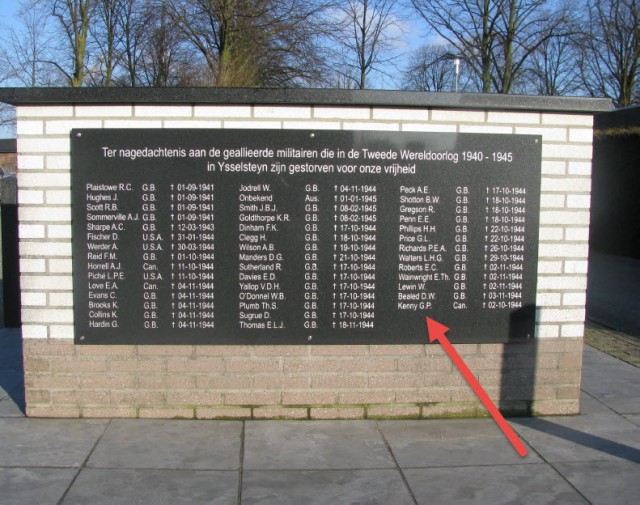
Two more engines caught fire and were stopped. Peter Funk tried to re-start the port inner, but it immediately spat flames. Without a bomb load, a Lancaster could fly on one engine, though it might gradually lose altitude, so, though the situation now was clearly serious, I still felt confident that we would somehow manage to make it back to base. Even when the pilot gave the order: “Put on parachutes”, I regarded the instruction as a wise precaution to be followed until the crisis was passed. The aircraft appeared to be under control and with the nose down we were screaming away from enemy territory at about 250 knots. We were, in fact, by now over Holland.
But in another minute or two the order “Put on parachutes” was followed by the altogether unbelievable words, “Jump, jump”. For a moment I had to force myself to believe that Peter meant it. Then I was conscious, not of fear, though perhaps it rose out of fear, but of a feeling of the most profound regret at the idea of leaving the aircraft in which experience had established a complete and total confidence. Surely there was some hope left.
But the hydraulics of our crippled aircraft had been shot away and the pilot was fighting to keep control. I gave a last longing look at my desk and the charts and log and other paraphernalia and stepped down to the escape hatch in the nose. The bomb-aimer and engineer had already gone. I knelt over the open hatch and looked down. The earth seemed a long way below. I could not dismiss the longing not to have to make the fateful act, even though I knew that it was now a matter of life or death. It was a moment I had never previously visualised and involved a kind of surrender I was quite unprepared for. I was poised to tumble head first through the open hatch as we had once been instructed, when I suddenly thought of that ring which I would have to pull. Suppose I couldn’t find it when I was out there hurtling groundwards! I hesitated a second and grasped the ring in one hand. Then, without a single remaining reason for delay, I dived forward in a somersault.
There was a brief moment of unconsciousness, a blank remains in my memory. Then I felt a sudden sharp jerk through my body. I looked above me and there was the great silken canopy of my parachute. For a moment or two, it seemed that I was suspended motionless in space, because from my altitude of about 8,000 feet, my approach to the ground gave no sense of relative speed. Impelled, I suspect, by a navigator’s strict preoccupation with time, I looked at my watch. It was 1407 hours.
My first conscious act of the mind, and it came without my own volition, was: “Poor Mother, this is going to be hard for her when the news reaches home.” For the next few moments I seemingly hung in space. I had no sense at all of downward motion. For a second or two it worried me; the irrational thought that I was “stuck” up there entered my mind. Then I was suddenly struck by the total silence around me, a feeling I had never before experienced. For that first minute or so I must have been beyond the range of the ordinary sounds of earth. The noiseless atmosphere was eerie but beautifully peaceful.
I could see our aircraft flying into the distance apparently stable still. A couple of figures exited from it and I saw their ‘chutes open. Then my ‘chute turned around and they were lost to sight.
I began to pay attention to my descent. Below me was a broad expanse of flat countryside with small green fields surrounded by trees. Not a sign of warfare or military activity of any kind. My hopes of escaping capture rose. Perhaps I was descending into an area of Holland untouched by war. Then I heard heavy artillery fire but it seemed distant.
But a few moments later I heard the sharp crack of rifle shots, and then, unbelievably, the swift whistling whine of bullets passing close. Strangely, I was not worried at all by the thought that I might be killed, or even injured by one of these shots. I was concerned that my parachute might be ripped apart and that I would make an express trip to earth and a painfully heavy landing. (It would appear that the rear gunner was hit and killed, as he was found to be dead when a British tank crew got to him.)
By this time the upward approach of earth had become noticeably rapid and I called to mind the drill for making a good landing. I scanned the countryside but could still see no evidence of military activity, no troops, no vehicles on roads and no tanks moving across the ground. The only sign of human life was a farmer sitting in a slowly moving wagon drawn by an ambling horse. He appeared not to have noticed my approach, but I thought of him as a possible source of help and concealment
I was relieved to see that I would not have the awkwardness of landing in trees or dropping into a canal, but right into the centre of a small irregular-shaped field. I took a look at my watch. It was just 1415 hrs (2.15 p.m.) and I knew that my descent had taken eight minutes. Then I gave a half-turn to the knob of my parachute harness in the centre of my chest and, just before my feet touched the ground, banged the knob sharply with the heel of my right hand. The harness straps fell apart, I was released from the ‘chute and, striking the ground with a mild jolt, fell forward on my hands and knees. For an instant I seemed to have landed in the most peaceful spot on earth.
With the rapidity with which the mind works in moments of crisis, that instant was long enough for me to remember that I had first to get rid of my tell-tale parachute. “Bury it,” was the official advice. I looked at the 70 yards of white nylon stretched across the grass and wondered how I could possibly find a way to bury it. But I did not have to ponder my question for in the next instant I heard shouts and looking across the field I saw that a reception committee were coming towards me, seven or eight men in an unfamiliar green uniform. “Could they perhaps be members of a Dutch Home Guard,” my mind rationalised. But recognising the futility of the thought, I decided that I had best signify my surrender in the time-honoured fashion. I raised my hands above my head and my heart dropped into my boots.
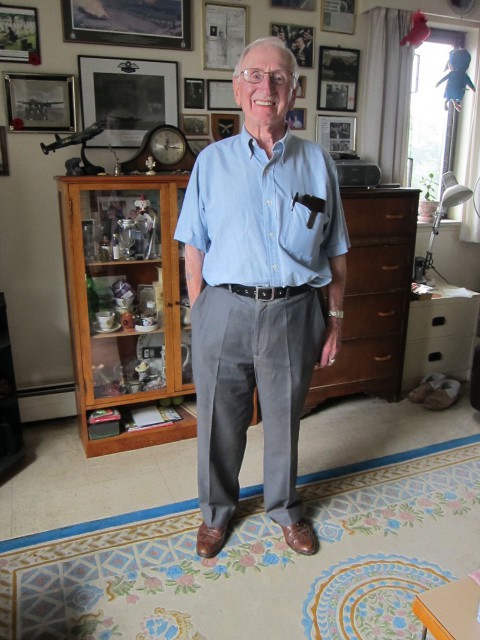
Thanks to the research committee:
Bernard Ploegmakers
Jan Strijbos
Ruud Wildekamp
Toon v/d Wetering
Gerrit Kateman
Harry Strijbos
Lei Potten
Joop Hendrix
Special thanks to:
peter Gulliver and Neil from 51 Sqn history org.
All the survivors and family especially James Bradbeer Australia.
By Joop Hendrix / Planehunters Recovery Team
Reproduced with permission on War History Online
